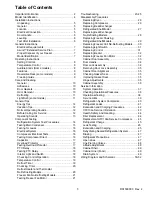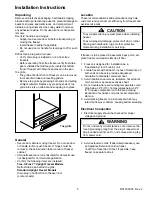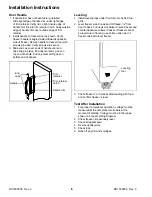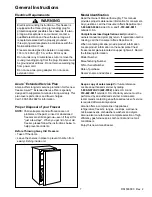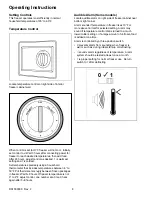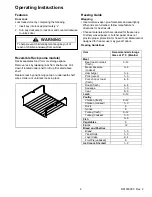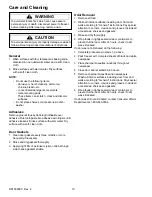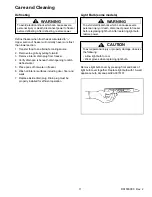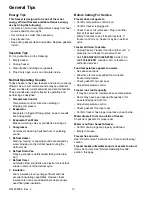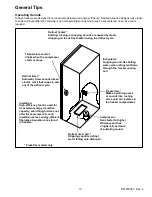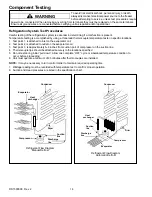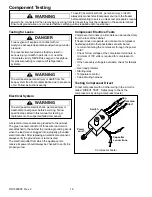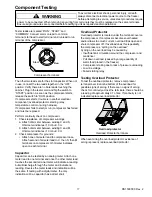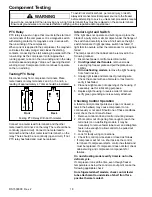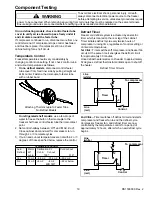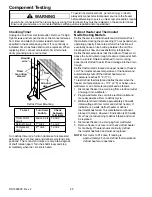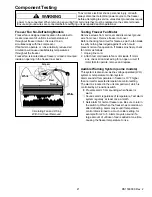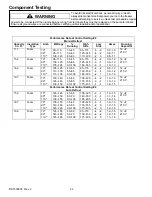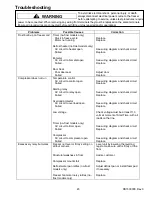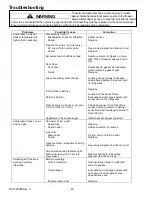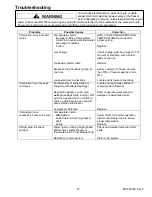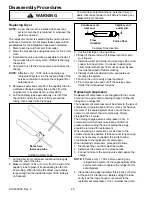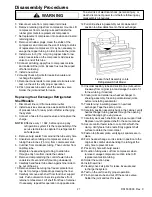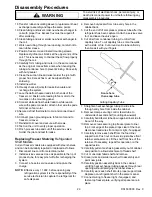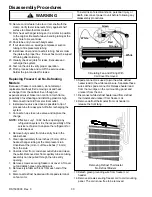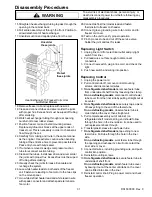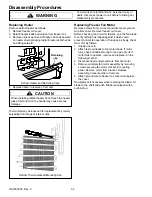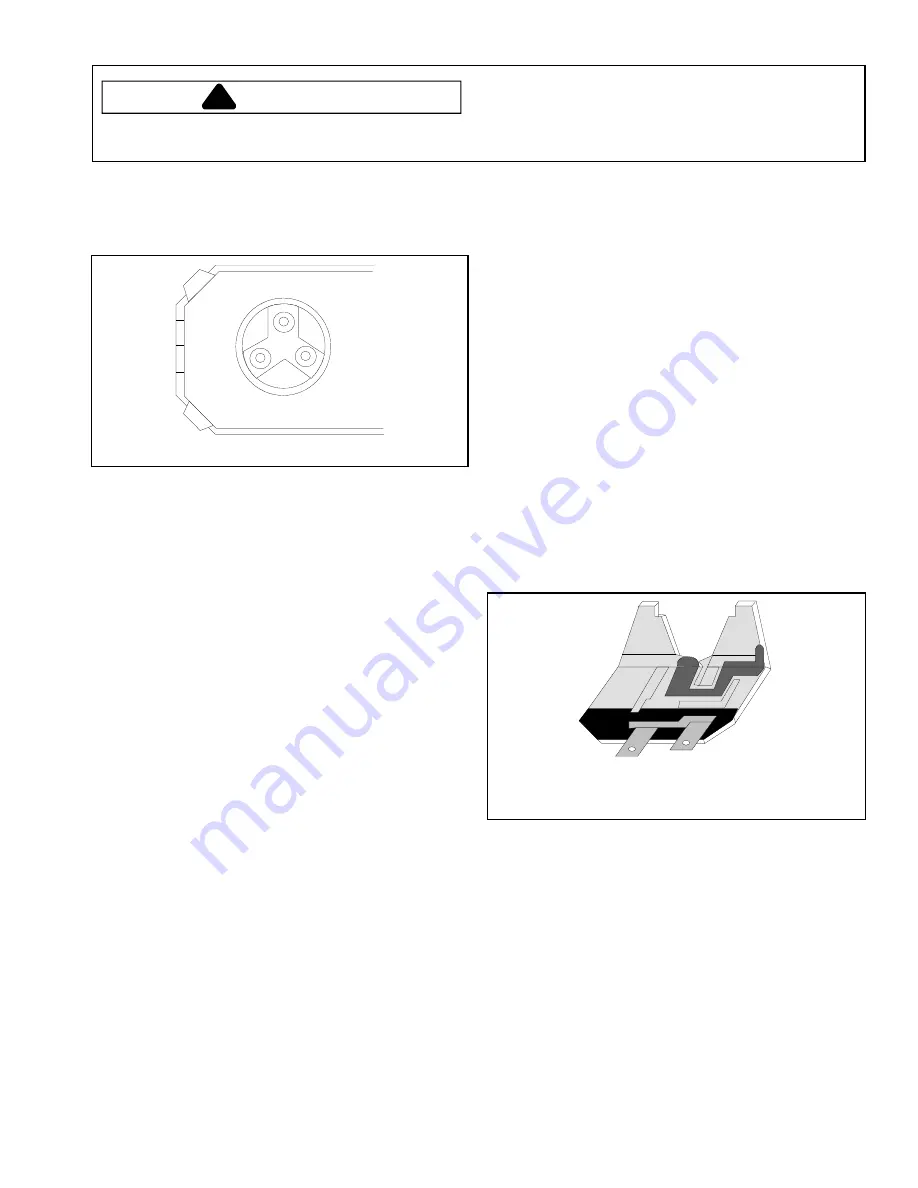
17
RS1500000 Rev. 2
Component Testing
To avoid risk electrical shock, personal injury, or death,
always disconnect electrical power source to the freezer
before attempting to service, unless test procedures require
power to be connected. When removing any wiring from terminals they must be replaced on the same terminals.
Ensure all ground wires are connected before certifying unit as repaired and/or operational.
WARNING
!
Tester leads are marked RUN, START and
COMMON. Connect common lead to common
terminal, start lead to start terminal and run lead to run
terminal of the compressor.
Run
Common
Start
Compressor Terminals
The other two leads are for the start capacitor. When not
in use, connect the two leads together in the OFF
position. Verify there are no bare leads touching the
cabinet. Plug in the tester cord and flip the switch to
START position. As soon as the compressor starts,
release the switch to RUN position.
If compressor starts, trouble is in another electrical
component (overload protector, starting relay,
temperature control or wiring harness).
If compressor fails to start (or run) compressor has failed
and must be replaced.
Perform continuity check on compressor.
1. Check resistance of compressor windings:
a. Attach ohmmeter between winding C and S,
Ohmmeter indicates <10
W
but > 0
W.
b. Attach ohmmeter between winding C and M,
Ohmmeter indicates <10
W
but > 0
W.
2. Check compressor for grounds:
Attach one ohmmeter lead to compressor case.
Attach second ohmmeter lead to C, then S, then M
terminals on compressor. Ohmmeter indicates
open on each terminal.
Capacitor
Capacitor can be tested by an analog meter. Attach one
meter lead to one terminal and once the other meter lead
touches the second terminal meter will indicate a reading
but will discharge through the meter and indicate no
reading. Reverse the meter leads and indication will be
the same. If testing with a digital meter, the only
indication will be, capacitor has a direct short.
Overload Protector
Overload protector is located under the terminal cover on
the compressor. If compressor becomes overheated
and/or draws too much current, overload trips open and
shuts compressor off. If overload does this repeatedly,
the compressor is cycling on the overload.
Cycling on the overload may be caused by:
Insufficient air circulation around the compressor and
condenser
Pull down overload (caused by a large quantity of
warm food placed in the freezer)
Compressor stalling due to lack of pressure unloading
Low line voltage
Failed starting relay.
Testing Overload Protector
To test the overload protector, remove compressor
terminal cover. Examine bottom of the overload for
possible signs of arcing. If there are no signs of arcing,
check for continuity across the terminals, there should be
a reading of approximately 0.7 ohms. If continuity is not
indicated replace overload protector.
Overload protector
Overload Protector Terminals
When examining the overload protector, evidence of
arcing is present, replace overload protector.

